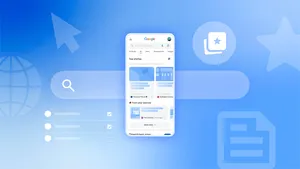A path to sustainability led by digital subscriptions
During my 10 years at The Boston Globe, we took a different path than most publishers. In 2011, we built a state-of-the-art website that was supported almost entirely by digital subscriptions, at a time when it was uncertain if readers would ever pay for news online. Today, digital subscriptions revenue alone more than covers for the cost of The Globe’s newsroom. Motivated to help others in the industry, I’ve since joined FTI Consulting, where I advise local publishers as they navigate the same existential business questions as we did.
Since I spent the last decade of my life pioneering a new business model for journalism, people often ask me if digital subscriptions can be a viable strategy for local news. Experience has taught me the simple answer is yes.
That’s why FTI Consulting partnered with the Google News Initiative on the GNI Digital Growth Program, a free program to help more small and mid-sized news publishers around the world achieve digital success. Reader revenue is central to the program’s curriculum, which is supported through playbooks, interactive exercises, workshops and labs. The workshops are currently guiding publishers through reader revenue models and sharing lessons learned from news organizations around the world, including those which have participated in the GNI Subscriptions Labs in North America, Latin America, Europe and Asia Pacific.
Publishers in the North America program, which FTI Consulting partnered on with Google and the Local Media Association, are great examples of the growth potential for local news. While the year-long Lab focused on helping news companies dive deep on digital subscriptions wrapped about six months ago, these publishers share a continued commitment to sustainability led by reader revenue.
As of August, the median year-over-year gain in digital subscriptions revenue for the participating publishers was 86 percent, compared to the industry average of 45 percent. While the business model of each organization is unique, these publishers achieved a higher level of performance by rallying around a shared set of digital metrics proven to make business impact.
For starters, they nearly doubled the conversion rates of their online readers to paying subscribers since the start of the Lab. They achieved this dramatic increase through a variety of tested tactics, including making digital subscriptions a priority, asking readers more often to subscribe and sign up for newsletters, improving and simplifying the online subscription checkout process and increasing website page speed.
What may be most impressive, though, is that these publishers were able to grow their overall number of subscribers without deep discounts or aggressive promotional offers. In fact, they raised the prices of their digital subscription offerings, even during today’s pandemic. The group’s average revenue per user (ARPU) has increased by 24 percent.
More important than the tactical improvements, publishers involved with the Lab have been able to create the “reader revenue machine,” a term that I use to describe a publisher that has put in place the mindset, processes, capabilities and technology to grow reader revenue continuously.
A good example of this transformation is The Portland Press Herald. In March, they launched “Digital Only Mondays,” which means they no longer print physical newspapers on Mondays. Within the first few weeks, this experiment increased the digital engagement of their print subscribers by 26 percent, and significantly reduced costs by eliminating one day of printing. The result as of July: The Press Herald was up 114 percent in digital subscriptions revenue compared to last year, and their staff gained the confidence to make bold decisions to support their digital transformation.
The reader revenue growth of The Press Herald is just one example of the bright spots I’ve seen shaping the future of local news. Through the GNI Digital Growth Program, I’m looking forward to working with Google to scale these insights and real world examples to help more publishers build sustainable business models for local journalism.
For those interested in learning more about the best practices that have helped publishers achieve digital subscriber success, join me, Google, other industry leaders and nearly 2,000 news organizations globally for our Reader Revenue workshops. Coming up next week, I will co-host a panel on this very topic. To sign up, visit the workshop registration page.



